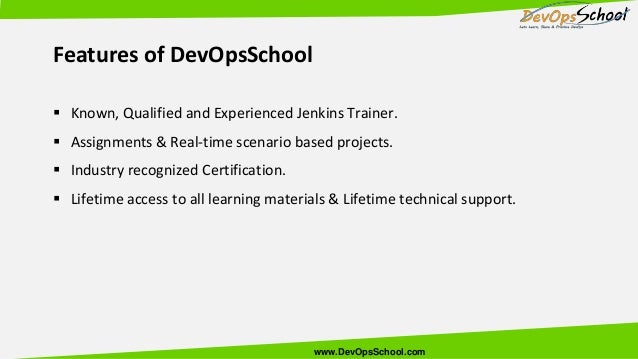Jenkins provides us seamless ways to set up a CI/CD environment for almost any combination of code languages and source code repositories using pipelines. It is an open-source automation server that can be used to automate tasks related to building, testing, and delivering or deploying software. It is also an essential tool that aids the DevOps teams, which is getting more popular nowadays due to the increasing amount of projects we manage at a given period, to ensure their high-quality deliverables. Jenkins has plugins that integrate with third-party source controllers like Github and BitBucket.
Jenkins is a powerful application that allows continuous integration (CI) and continuous delivery (CD) solution. The idea of CI is to merge code from individual developers into a project multiple times per day and test continuously to avoid downstream problems. CD takes this a step further to ensure that all merged code is always in a production-ready state. Jenkins enables developers to automate this process as much as possible — up to the point of deployment.
Jenkins Advantages:
It has a huge and vibrant community
It’s free
It’s easy to install and set up
It offers more than 1000 plugins
Works on all major platforms
How does it work?
With the help of Jenkins, developers and release managers build and test software continuously, integrate changes and run a smooth and automated CI/CD process. Its integration with deployment and testing tools allows for a continuous delivery process. Jenkins basically offers automation to the entire software development and delivery process.
What are the Benefits of Jenkins Pipeline?
Using Jenkins Pipeline to automate CI/CD pipelines dramatically increases repeatability, reliability, efficiency, and quality. The Pipeline allows managing the process code like any other production code, facilitating iterative development for pipelines, along with access control, code review, audit trails, and a single source for the truth that is review-able (and potentially an approval/promotion process) by multiple project members. Multi-branch pipelines are also possible to configure different jobs for different branches within a single project, eliminating the need for manual job creation and management and enabling automated job stop or suspension as needed. All of this results in consistency, reliability, efficiency, and increased quality.

How does Jenkins work?
First, a developer commits the code to the source code repository. Meanwhile, the Jenkins server checks the repository at regular intervals for changes.
Soon after a commit occurs, the Jenkins server detects the changes that have occurred in the source code repository. Jenkins will pull those changes and will start preparing a new build.
If the build fails, then the concerned team will be notified.
If the build is successful, then Jenkins deploys the built-in test server.
After testing, Jenkins generates feedback and then notifies the developers about the build and test results.
It will continue to check the source code repository for changes made in the source code and the whole process keeps on repeating…
Before getting into Jenkins, let’s have a short look at DevOps because Continuous Integration is the most important part of DevOps that is used to integrate various DevOps stages and Jenkins is the most famous Continuous Integration too. DevOps is a set of practices that combines software development (Dev) and IT operations (Ops). It aims to shorten the systems development life cycle and provide continuous delivery with high software quality.
DevOps is primarily implemented in application development for e-commerce websites, cloud-native applications, and other large distributed platforms. It consists of multiple phases that collectively become the DevOps lifecycle.
First, a developer commits the code to the source code repository. Meanwhile, the Jenkins server checks the repository at regular intervals for changes.
Soon after a commit occurs, the Jenkins server detects the changes that have occurred in the source code repository. Jenkins will pull those changes and will start preparing a new build.
If the build fails, then the concerned team will be notified.
If the build is successful, then Jenkins deploys the built-in test server.
After testing, Jenkins generates feedback and then notifies the developers about the build and test results.
It will continue to check the source code repository for changes made in the source code and the whole process keeps on repeating…
- Continuous Development
- Continuous Integration
- Continuous Testing
- Continuous Feedback
- Continuous Monitoring
- Continuous Deployment
- Continuous Operations
- Continuous Integration
To get trained on Jenkins, please refer to DevOpsSchool. They’ve very known and highly qualified, working professional and experienced trainer. Get more details below:

Jenkins Agenda:

MotoShare.in delivers cost-effective bike rental solutions, empowering users to save on transportation while enjoying reliable two-wheelers. Ideal for city commutes, sightseeing, or adventure rides.

